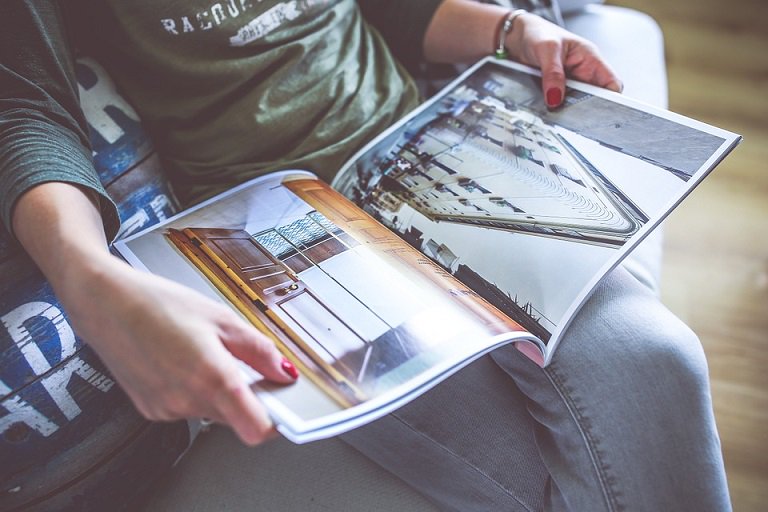3 Catalogue Design Trends You Don't Know About

Although a strong web presence is crucial to success, for many businesses a marketing plan is never complete if it doesn't still include high-quality printed materials. There are a lot of novel and innovative design trends when it comes to catalogues.
Here are the three that are really making waves as we head into 2019.
1) Drawn Lettering And Illustrations
In today's digital, app-driven world there seems to be a yearning for items that are handcrafted and one-of-a-kind. To that end, one catalogue design trend that's become more and more prevalent in the last few years is the use of fonts that look as if they were rendered with pencil, pen or markers.
Small, sketchy illustrations are also being used alongside professional product photography in order to give a catalogue a more rustic and intimate feel. This is in stark contrast the flat, minimalist style that dominated catalogue design at the beginning of the 2010s. So, don't be afraid to ask to have some hand-drawn elements used in your catalogue.
2) Double Exposure
Double exposure is a peculiar photographic effect that predates digital photography. It basically super imposes one image over another, with one of the most popular versions being a figure in silhouette that frames another more complex photographic scene (see the introduction to the popular HBO series True Detective for a stellar example of this variation of double exposure).
When done tastefully, double exposure can really make a print catalogue stand out from the rest of the pack, for any given industry.
3) Virtual Reality (VR) & Augmented Reality (AR)
A printed catalogue may not seem like the obvious place to include VR and AR features but, in fact, both technologies have started playing an interesting role in catalogue production by a growing band of UK retailers.
IKEA for instance - no stranger to embracing technological innovations in its catalogues – has introduced AR to its product catalogue smartphone app. The free app, compatible with iOS devices (but not Android yet unfortunately) features 2,000 products, including IKEA’s full sofa range and many of its rugs and accessories.
When a product is selected, an image of the item is superimposed on the customer’s living room as her or she moves the smartphone around the space, using the device’s camera function as a viewport. This helps customers make informed decisions about furniture dimensions and colours, and whether a given product will work in their home.
This useful application of AR is, of course, app based – but the images used are exactly the same as those featured in the print catalogues with which the app is closely synced.
Businesses can take advantage of this technology by including a smartphone scannable link in their printed material which takes users directly to the corresponding product on the app. This works in a similar way to the old QR code (Quick Read technology), whereby a square consisting of printed bars and dots leads the user directly to a webpage when scanned by a mobile device.
Using a VR or AR enabled app alongside a print catalogue is one of the best and most sophisticated ways that a company can integrate their web presence with more traditional promotional materials (catalogues, brochures, print ads in magazines etc...).
When used tastefully and tactfully, these new features go beyond being another fancy design trend or gimmick and can really help build the customer base, engagement and increase sales.
Get Professional Catalogues Printed Today
To find out more about how your business can benefit from having professionally designed catalogues and other printed promotional materials, get in touch with one of our team. We're always ahead of the curve when it comes to these, as well as other leading tendencies in design and technology, and you'll be sure to have a final product that sets you apart from the competitors in your niche. What's more, although we're based in Redditch, our extensive network of printing partners throughout the UK means that we can assure a fast turnaround service so you'll never be left without catalogues and/or brochures to hand out at a trade show or other upcoming industry event.

